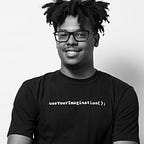Creating a Linear Gradient Container in Flutter
Have you ever wanted to add a touch of sophistication to your Flutter app’s user interface with a gradient container? Whether you’re recreating a design from Dribbble or simply looking to enhance your app’s aesthetics, creating a linear gradient container can be the perfect solution. In this article, we’ll walk you through the steps to achieve this effect using Flutter’s powerful tools.
The End Result
Before we dive into the details, let’s take a quick look at what we’re aiming for:
The final appearance of your linear gradient container depends on several factors, including the colors you choose, the container’s height, and more. It’s a versatile approach that allows you to create unique visual effects.
Step-by-Step Guide
To create a linear gradient container in Flutter, follow these steps:
1. Set Up Your Flutter Project
Begin by either creating a new Flutter project or opening an existing one using your preferred development environment.
2. Create the Linear Gradient Container
Now, let’s dive into the details of creating the linear gradient container. This is where the magic happens.
In your Dart file where you plan to implement the gradient container, import the Flutter package:
import 'package:flutter/material.dart';Next, define a Container widget and set the decoration property with a BoxDecoration that contains a LinearGradient as the background. Here's a basic example:
class MySuperContainer extends StatelessWidget {
@override
Widget build(BuildContext context) {
return MaterialApp(
home: Scaffold(
appBar: AppBar(
title: Text('Linear Gradient Container'),
),
body: Center(
child: Container(
width: 200,
height: 200,
decoration: BoxDecoration(
gradient: LinearGradient(
begin: Alignment.topLeft,
end: Alignment.bottomRight,
colors: [Colors.blue, Colors.green],
),
),
child: Text('Hello World'),
),
),
),
);
}
}Let’s break down what’s happening in this code:
LinearGradientallows you to define the direction and colors of your gradient.beginandendspecify the starting and ending points of the gradient. You can customize these points to control the direction of your gradient.colorsis a list of colors that make up the gradient. You can add more colors to create complex gradients.
Inside the Container, you can place any widgets you want, such as text, images, buttons, or other UI elements. This allows you to create a rich and engaging user interface. I added a default ‘Hello World’ Text but feel free to experiment with other texts and widgets. ;)
3. Customize and Experiment
Feel free to experiment with different colors, gradient directions, container sizes, and content to achieve the exact look you desire for your app. You can explore advanced gradient options, such as radial gradients or sweep gradients, for even more creative possibilities.
And there you have it! With these steps, you’ve successfully created a linear gradient container in Flutter. It’s a fantastic way to add visual depth and appeal to your app’s user interface. Enjoy designing your own unique gradients!
Creating a linear gradient container in Flutter is just the tip of the iceberg when it comes to designing beautiful and interactive user interfaces. Flutter, with its rich set of widgets and flexibility, allows you to bring your creative design ideas to life. Whether you’re a seasoned Flutter developer or just getting started, there’s always more to explore and learn.
As you embark on your Flutter journey, don’t hesitate to dive deeper into design elements, experiment with different gradients, and discover new ways to make your app visually stunning. Flutter’s community and resources are always available to support your creativity.
We’d love to hear from you! In the comments below, please share your favorite design features in Flutter, as well as any specific design challenges or topics you’d like us to explore in future articles. Your input and feedback are invaluable as we continue to explore the world of app design and development in Flutter.
Happy coding and designing! 🚀✨
